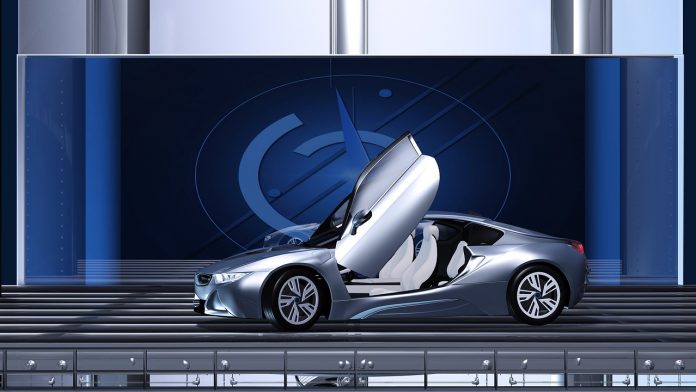As technology continues to break new ground, the automotive industry is not being left behind. Innovative car technologies will revolutionize the industry.
Engineers are harnessing the power of technology to revolutionize driving experiences.
Future cars will use innovative technologies to enhance their capabilities and make them safer and easier to drive.
Innovative Car Technologies Coming Soon
1. Self-Driving Cars
Self-driving cars, also called driverless cars or autonomous vehicles are vehicles that drive themselves.
They can sense their environments and drive safely with little to no human input.
Autonomous vehicles can view road signs, see traffic lights switch lanes, accelerate, engage automatic braking, and even find alternative routes.
Their ability to process information about their environment faster than humans is believed to make driving even safer.
According to Policy Advice, there are 1,400 self-driving cars in the US with the numbers expected to rise as people become accustomed to these vehicles.
The United Kingdom recently announced the regulation of autonomous vehicle use at low speeds.
This comes even as Germany, Canada, Australia, and New Zealand continue to hold government-level discourse around self-driving cars.
With support from tech giants, automakers like Tesla, Mercedes Benz, Honda, Nissan, Uber, and Google are locked in fierce battles for the top spot in driverless cars.
As the companies continue to perfect self-driving cars, we expect these vehicles to hit the global market in a couple of years.
2. Inter-car Communication
The concept of cars talking to each other is advancing into reality as car manufacturers equip vehicles with their own internet communication.
Presently, vehicular internet is an advanced feature in high-end vehicles, but we expect it to become a standard feature in a few years.
As more cars are equipped with this technology, they will wirelessly exchange information about their location, speed, and heading.
This will create a “360-degree” awareness of all other vehicles in proximity.
According to the NHTSA (National Highway Traffic Safety Administration), vehicle-to-vehicle communication (V2V) technology can help prevent up to 615,000 car crashes.
With a 300-meter range, the technology allows vehicles to receive messages from nearby vehicles to identify potential crash threats.
The messages will employ visual or audible alerts to warn the drivers who can then take preemptive actions to avoid crashes.
V2V technology will also detect traffic, terrain, or weather to help drivers choose the best possible route.
Information gathered will not identify the driver, the vehicle, or technical controls to deter vehicle tampering or tracking.
We can expect to see this innovation in cars, buses, lorries, and even motorcycles.
Perhaps in the future, the technology will extend to bicycles and pedestrians to improve their visibility to motorists.
3. Augmented Reality Screens
Mercedes Benz has already incorporated augmented reality in some of its luxury models but this technology remains a dream for most cars.
Augmented reality (AR) technology uses the car windscreen as a navigation screen to guide a motorist about their surroundings.
It displays directional information, street names, building addresses, road width, and terrain to help the motorist maneuver.
With information right in front of their eyes, the driver will have minimal distractions and focus on the road ahead.
AR will also help drivers park their cars better by providing a better perception of distancing lines. It will also assess a car’s ability to fit in the chosen parking space.
Augmented reality is expected to impact the world of digital advertising by displaying ads of products and services as you drive along.
The technology will ask drivers if they wish to view their balances as they drive past their banks.
It may even pinpoint a designer shoe or dress worn by a passer-by, quoting availability in stores and prices.
4. Airbags as an Active Safety System
For years now airbags have been a part of passive safety measures deploying in the event of a car crash.
Mercedes has been working on a technology that will see airbags deploying from underneath the car when an impact is inevitable.
These airbags will be covered in friction coating to help slow down the car and enhance stopping power to minimize collision impact.
The airbags will be designed to lift up the car to counter dipping motion following hard braking.
This feature will also lessen bumper-to-bumper contact and keep vehicle occupants from sliding during a collision.
While this technology is not available in any model yet, we can expect a future where airbags will protect vehicle occupants and stop cars.
5. Energy-Efficient Body Panels for Hybrid Electric Cars
Exxon Mobil estimates that by the year 2040, nearly half of all new cars will be hybrids. Hybrids are here to stay.
At present, hybrid electric vehicles rely on power generated from internal combustion engines and electric motors.
These motors use energy stored in batteries that are heavy and occupy plenty of space.
European car manufacturers are exploring and testing body panels that can store up energy and are pliable enough for vehicles.
If the technology works, it will reduce a car’s overall weight by approximately 15 percent.
These panels will capture energy through regenerative braking or while the car is plugged in for a recharge. They will then feed the stored energy to the car when it is needed.
Toyota is thinking ahead by researching lightweight body panels that will capture solar energy making the car environmentally friendly.
Conclusion
The automobile industry has set its sights high as researchers look into highly innovative technologies to improve car safety and user experience.
We can only wait to see what they come up with.
























